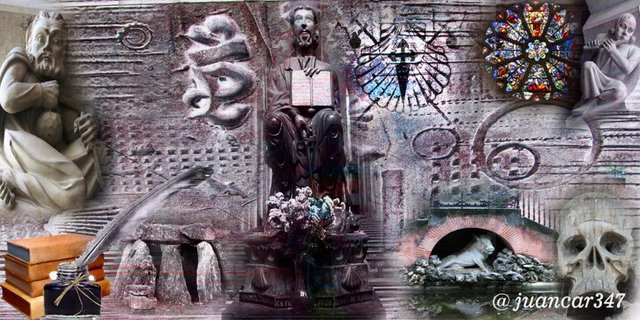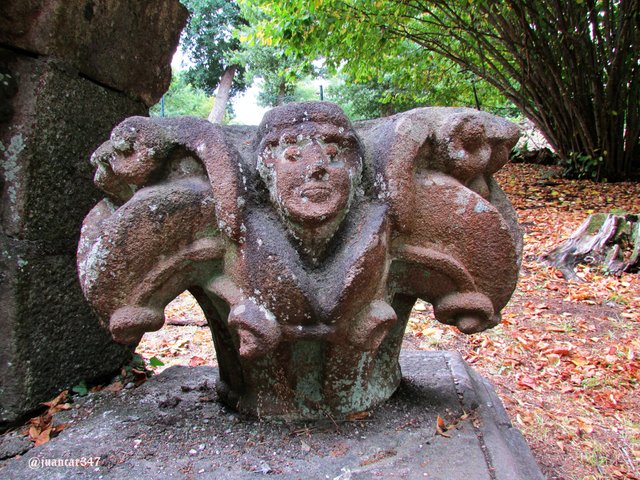Pontevedra is considered the capital of the Portuguese Way or Way of the Way of the Silver, and not without reason, nevertheless taking into account the successive renovations, as well as the serious dispersions of a rich artistic heritage, varied and without any doubt monumental, in the best of cases little or nothing known and at worst, reduced miserably to ashes.
Now, of that wealth, are part, as they did in the past, the great monasteries, regardless of whether there were authors, such as Juan García Atienza, who came to affirm, making assumptions about the real motives, that these, or the Most of them, in their absence, rose far from the typical paths that the pilgrims traveled until they reached their destination in Compostela, or a hundred kilometers further on, at Cape Finisterre, where this other road ended, used by past cultures since the dawn of time and considered, therefore, as pagan.
Precisely, many of the temples-churches, chapels or monasteries-that mark the bull's skin of the old Hesperia, that same Hesperia where Hercules starred in the theft of Gerion's bulls, rose over previous places of worship, leaving evidence of it in numerous cases, where still reused foreign elements are verified, that go from part of menhirs and dolmens -such as the one that is located in the inner north wall of the Soria parochial of Tera-, until Celtic and Roman sacrifices, used as an altar or as an altar base, being able to quote, also as an example, the one that can be seen in the church of Santa Eulalia de Morcín, Asturias or that one, which is located in a church in Ourense, which still preserves part of its old pre-Romanesque factory : Santa Eufemía de Ambía; the latter, likewise in Camino de Santiago and close to towns of interest, such as Xunqueira de Ambía, Allariz and Santa Mariña de Augas Santas.
In Augas Santas, for example, the case of the Church of the Assumption is remarkable, a temple that is ignored because it never came to an end - there are those who suppose in good law that the arrest and dissolution of the Order of the Temple He had a lot to see - but whose foundations are built on a previous complex of a Celtic nature, which responds, curiously - and I say curiously, because it is a place that has nothing to do with fire and much with the worship of the waters - , to the name of Forno da Santa.
Mondariz and one of its most populous and significant areas, Mondariz Balneario, can also be considered as a town of Jacobean passage, although its parochial temple has lost all vestige of that pilgrim art, as many have consented to call the Romanesque, although it is true that in its surroundings, interesting vestiges still survive, as evidenced by the temple of San Pedro, in Angoares -day, cemetery church-, population that we have to situate a short distance from Ponteareas and that Autovía de la Plata that connects both Rias, the Highlands and the Lowlands.
In fact, another nearby town that uses an old Gothic palace as a pilgrim's lodge, would be Redondela, famous, among other things, for its port of Cesantes, in front of which is located the island of San Simón, which in medieval times housed a hospital, then a fort and also a prison.
In Redondela, and in front of the aforementioned hostel of pilgrims, you can still find another curiosity, no less worth mentioning: an ancient stone transept, at the base of which there is a breastplate of spirits, where apart from the candles, coins piously detached for liberating souls from purgatory or the stones that every pilgrim carries as a tribute to the ancient ways of the roads, you can see poorly formed potatoes as a rogatory of blessing for the coming harvests.
This entails thinking that, in some aspects, Galicia, fortunately, continues to be Galicia: 'quid pro cuo'.
Mondariz Balneario is a place that takes advantage of the peculiar properties of its waters. It emphasizes, in this sense, the denominated source or spring of Gándara, on which a temple of neoclassical aspect and circular plant rises. Some meters above it, and having as reference the Chapel of the Virgin of Carmen, as well as a sovereign building, neoclassical also and reconditioned as spá, a beautiful and at the same time leafy park invites to the walk and the contemplation.
Inside, it is not difficult to have the feeling that time, by one of those incomprehensible paradoxes of physics, has stopped its path and who knows some of the ancient stories of ancient Galicia, perhaps remember, when you hear the sweet trill of some mysterious bird, the story of San Ero de Armenteira.
Or if you prefer, for having traveled all or part of the Primitive Way that arrives in Galicia through Roncesvalles, and has spent the night in the Navarrese monastery of Leire, that of San Virila, since both stories are practically identical and treat, six hundred or seven hundred years before Einstein, of Relativity.
Relative would be, then, to find that scattered but magnificent pile of Romanesque remains and not have the sensation, as had the Ero and Virila own - eroticism and virility? - to have returned to the monastery two hundred years later and find it totally ruined. Because, in fact, although no sign points to the existence of these artistic and melancholy pieces of History -part of the windows of an apse and part of a grandiose main façade- nor report on their origin, some sources indicate that they belonged to the church of a diminished monastery, which was erected in the neighboring town of Castelans, a small parish belonging to the municipality of Covello, where it is still preserved, in complete ruin, of course, part of that unfortunate monastery.
And probably, the same place belonged, likewise, the magnificent breastplate that represents San Martiño liberating souls from purgatory - this scene, does not stop remembering part of that cryptic history described in the book by Juan Valentín Andreae, The chemical weddings by Kristian Rosenkreutz- which serves as an ornament and base to a fountain that is a few meters beyond that stargate or door to the stars in which the arch of the cover of the old monastery of Castelans has become.
In short, leaves cruelly torn from an authentic sociological and psychological compendium that fed the spirits of medieval man. Archetypes, after all, not so different from those that affect modern man. As the great French poet, François Villon would say: where did the snows of yesteryear go?.
Related movie:
NOTICE: originally published on my blog ARTE, MITOS Y ARQUETIPOS. Both the text, as the photographs, and the video (except music, reproduced under a YouTube license), are my exclusive intellectual property. The original entry, where you can check the authorship of juancar347, can be found at the following address: https://artemitosyarquetipos.blogspot.com/2016/06/mondariz-el-jardin-del-arte-olvidado.html
If you liked what you have read and seen, I invite you to know the world of: @ juancar347

designed by: @txatxy
















.jpg)
Hiya, just swinging by to let you know that this post made the Honorable Mentions list in our daily Travel Digest. Please drop by to check out all the rest of today's great posts and consider upvoting the Travel Digest if you like what we're doing.
Downvoting a post can decrease pending rewards and make it less visible. Common reasons:
Submit
Thank-you very much!
Downvoting a post can decrease pending rewards and make it less visible. Common reasons:
Submit
Congratulations, Your Post Has Been Added To The Steemit Worldmap!
Author link: http://steemitworldmap.com?author=juancar347
Post link: http://steemitworldmap.com?post=art-travel-and-culture-mondariz-pontevedra-the-garden-of-forgotten-art
Want to have your post on the map too?
Downvoting a post can decrease pending rewards and make it less visible. Common reasons:
Submit
Thanks
Downvoting a post can decrease pending rewards and make it less visible. Common reasons:
Submit